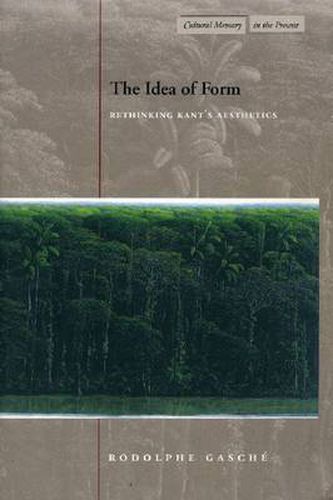Readings Newsletter
Become a Readings Member to make your shopping experience even easier.
Sign in or sign up for free!
You’re not far away from qualifying for FREE standard shipping within Australia
You’ve qualified for FREE standard shipping within Australia
The cart is loading…






Against the assumption that aesthetic form relates to a harmonious arrangement of parts into a beautiful whole, this work argues that reason is the real theme of the Critique of Judgement as of the two earlier Critiques. Since aesthetic judgement of the beautiful becomes possible only when the mind is confronted with things of nature, for which no determined concepts of understanding are available, aesthetic judgement is involved in an epistemological or, rather, para-epistemological task. The predicate beautiful indicates that something has minimal form and is cognizable. This book explores this concept of form, in particular the role of presentation (Darstellung) in what Kant refers to as mere form, which involves not only the understanding, but also reason as the faculty of ideas. Such a notion of form reveals why the beautiful can be related to the morally good. On the basis of this reinterpreted concept of form, most major concepts and themes of the Critique of Judgement - such as disinterestedness, free play, the sublime, genius and beautiful arts - are examined by the author and shown in a new light.
$9.00 standard shipping within Australia
FREE standard shipping within Australia for orders over $100.00
Express & International shipping calculated at checkout
Stock availability can be subject to change without notice. We recommend calling the shop or contacting our online team to check availability of low stock items. Please see our Shopping Online page for more details.
Against the assumption that aesthetic form relates to a harmonious arrangement of parts into a beautiful whole, this work argues that reason is the real theme of the Critique of Judgement as of the two earlier Critiques. Since aesthetic judgement of the beautiful becomes possible only when the mind is confronted with things of nature, for which no determined concepts of understanding are available, aesthetic judgement is involved in an epistemological or, rather, para-epistemological task. The predicate beautiful indicates that something has minimal form and is cognizable. This book explores this concept of form, in particular the role of presentation (Darstellung) in what Kant refers to as mere form, which involves not only the understanding, but also reason as the faculty of ideas. Such a notion of form reveals why the beautiful can be related to the morally good. On the basis of this reinterpreted concept of form, most major concepts and themes of the Critique of Judgement - such as disinterestedness, free play, the sublime, genius and beautiful arts - are examined by the author and shown in a new light.